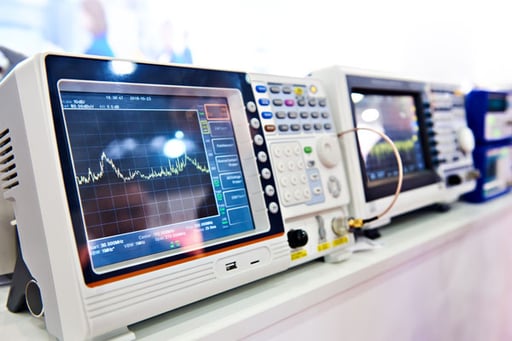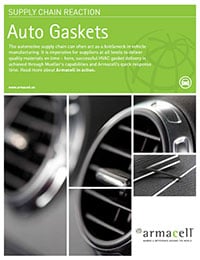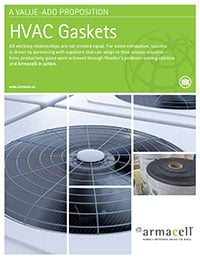
The medical industry is highly regulated, with little room for error or unsatisfactory products. That’s why it’s important to know what you need from your materials before you go into production, including the numerous factors that contribute to selection: tests, certifications, and other processes.
In this guide, the health and safety experts at Mueller will explain the factors and questions that should guide your material selection and inventorying processes. We’ve listed the different sections below, so feel free to select the topic most pertinent to your business before moving on to others.
Important Topics to Consider
Does Material Cost Differ in the Medical Industry from Other Markets?
How Does Material Certification Affect Medical Products?
How Do Custom Solutions Teams That Work With Independent Labs Benefit in the Medical Industry?
What Are Some Differences Between High-Temperature Resistant Materials?
What Medical Materials Can Withstand the Sterilization Process?
How Can Rapid Prototyping Help in the Health and Safety Industry?
How Do You Avoid and Handle Product Recalls in the Medical Market?
What Are Inventory Programs and How Do They Affect Medical Manufacturers?
How Can Material and Process Optimization Help Your Business?

Does Material Cost Differ in the Medical Industry from Other Markets?
Many people believe that health and safety materials come at a premium due to their important roles in life-saving equipment. However, these materials often have the same (or similar) price points as other industries, with some caveats.
This is mostly attributed to the testing for skin irritation and sterilization that needs to happen to use certain materials. Materials need to withstand the atmosphere and temperature involved in sterilization and not irritate skin on contact to be used in the medical industry.
The materials used in the health and safety industry are no different than those used in other markets, so they are not more expensive just because they are part of these applications. However, the testing required for many medical applications drives the cost of certain materials up.

How Does Material Certification Affect Medical Products?
The material tests mentioned above usually result in certifications for those products. Proper material certifications are one way that the industry regulates its products and upholds safety. This is why it’s important to be familiar with these requirements and their impact on your business.
The certifications important to the medical industry come from the Food and Drug Administration (FDA). There are different types of FDA certifications, including export and import.
There are also multiple medical device classes to account for when looking at certifications. For example, the dental industry has Class 1 and Class 3 devices. Dental chairs or tool-holders would be Class 1 devices because they don’t require high levels of sterilization. However, a sterilizing tool used in a patient's mouth is considered Class 3 because they must be sterile.
Ultimately, material certification affects the supply chain and where you get your materials from. These certifications and their place in the industry are not complicated, but you should still familiarize yourself with them before beginning new projects.
.png?width=510&name=unnamed%20(7).png)
How Do Custom Solutions Teams That Work With Independent Labs Benefit in the Medical Industry?
Independent labs, when partnered with custom cut solutions teams like Mueller, can guarantee that materials meet whatever requirements your products demand.
Independent labs are used in cases where customers want to be sure that a material meets certain specifications. They do this by using the test standards that your converter sends that you want materials tested for, also describing how to send the material (as different tests might require different dimensions). Then, they carry out the appropriate test before returning the results to the converter.
Independent labs are capable of conducting almost any type of material test, including (but not limited to) the following:
- Low volatile organic compound (VOC)
- Flammability
- Acoustic absorption
- Adhesive strength
- Prop 65
These tests are applicable in all industries, but some are especially important for the medical market, like flammability and Prop 65 tests. Independent lab testing assures customers that the materials they need meet or exceed the specifications they require, providing greater confirmation than a data sheet can provide.

What Are Some Differences Between High-Temperature Resistant Materials?
One of the certifications mentioned above is for materials that can withstand high temperatures in medical devices. Medical devices are often full of moving parts that generate heat, which has negative effects on products if the temperature gets too high.
There are almost countless materials that have some degree of heat resistance, but only a few that are commonly used in the applications discussed above. Some of these materials include:
- Silicone (foam, rubber, or sponge)
- Fluorosilicone (foam or rubber)
- Teflon film
- Mylar film
These materials all have shielding properties and are designed to keep the heat away from the outer edge of a product, where a user might handle it. Some can disperse heat, but most simply block heat from escaping and affecting other aspects of the device.
You want to select a material that ensures a consistent and safe experience for users. Even if components only ever heat up to temperatures of 250 degrees, it’s important to make sure your device is prepared.
-2.png?width=512&name=unnamed%20(2)-2.png)
What Medical Materials Can Withstand the Sterilization Process?
Having equipment that is sterile and sanitary is crucial in the health and safety industry. This means that some of the materials in these products must also be sterilized.
There are multiple material sterilization processes for medical applications, just like there are different ways to sterilize the medical equipment they make up; some of them are the same. Those processes include:
- Heat sterilization
- Steam sterilization
- Chemical sterilization
There are three main materials suited for sterilization since they can withstand high temperatures and have strong chemical resistance:
- Silicones
- Urethanes
- Polytetrafluoroethylene (PTFE) products
The health and safety industry is massive, and not all applications have to be sterilized. However, it is important to know what the different sterilization processes look like and what materials are suited for them.
.png?width=410&name=pasted%20image%200%20(2).png)
How Can Rapid Prototyping Help in the Health and Safety Industry?
The health and safety industry is constantly evolving, and rapid prototyping can help keep your business competitive.
Rapid prototyping is a process for creating functional material test samples with a quick turnaround time, often without tooling investment. This process is a quick and easy way to sign off and do initial verifications before moving forward with your order; your company might even require it as part of your development process.
Rapid prototyping creates samples in a quick and accurate manner to determine if they are fit for large-scale production. This can save you from creating a full production run of a part before realizing it doesn’t meet a customer’s specifications. In the medical industry, where people need parts quickly to create life-saving devices, this can be catastrophic.
Updating your manufacturing workflow to include rapid prototyping can help you stay ahead of the curve, no matter what products you create.
.png?width=512&name=unnamed%20(4).png)
How Do You Avoid and Handle Product Recalls in the Medical Market?
A complete recall can harm your business in a number of ways, including expensive process changes and negative publicity. For these reasons, among others, it’s important to learn how to avoid them altogether.
Post-launch product recalls happen because businesses don’t involve a converter in the early design stages of the manufacturing process. Without a converter involved, businesses can miss issues that cost them time and money down the line, such as over-specifying materials or backtracking to remake a part.
Using a converter during the design phase can also prevent negative publicity within the industry as a result of your recall. A recall can tarnish your brand and affect your public image, causing customers to question buying from you in the future. This can result in an even greater loss for your business. For further insight on how to handle product recalls, including case studies from Mueller, take a look at our full blog on the topic.
What Are Inventory Programs and How Do They Affect Medical Manufacturers?
More businesses are using inventory programs to reduce their spending and increase their productivity, both of which are essential for success in the medical industry.
There are five different kinds of inventory programs, each with their own benefits:
- Min-Max programs: Your supplier develops a minimum and maximum amount of materials that your business needs, and then works to keep your business within that window by shipping materials to you.
- Kanban programs: A more focused method than min-max programs, Kanban systems supply you with inventory right as you use it, not just when you approach the minimum amount.
- Safety stock programs: With this program, your company decides on a designated quantity of material to keep on your supplier or converter’s shelves, giving both the converter and you a degree of flexibility.
- SOMI programs: When you use a supplier-owned and managed inventory (SOMI) program, your supplier stores completed parts (not raw material) at their facility.
- Tailored programs: Companies like Mueller have the capabilities to create custom programs that are tailored directly to your needs, whether you need a combination of the other programs or a completely unique system.
These programs can help your business by:
- Reducing or eliminating line down situations
- Significantly reducing inventory carrying costs
- Enabling better blanket orders
Having the right amount of parts and materials is essential in a time-sensitive industry like health and safety. Selecting the right inventory program will open your business up to new opportunities to cut costs, all while providing your customers with the products they need.
How Can Material and Process Optimization Help Your Business?
This guide and its collection of resources are here to ensure that you select the best materials for whatever medical application your business creates. Whether you create parts for surgical devices or dental trays, establishing a strong material selection process and optimizing your supply chain will help you stay on top of this ever-changing market. Keeping the factors and questions we’ve discussed in mind will be crucial for ensuring success no matter where the industry goes next.
Be sure to consider everything from material tests, certifications, and environmental requirements to prototyping and inventory programs. These will all inform the materials you select and the costs necessary to work with them.
You can optimize your material selection factors and processes with confidence using the information and resources we’ve discussed. Remember, great products begin with great materials. You now know how to make the right choice for all medical applications and can get to work creating the best products possible.




-1.png?width=512&name=unnamed%20(2)-1.png)


